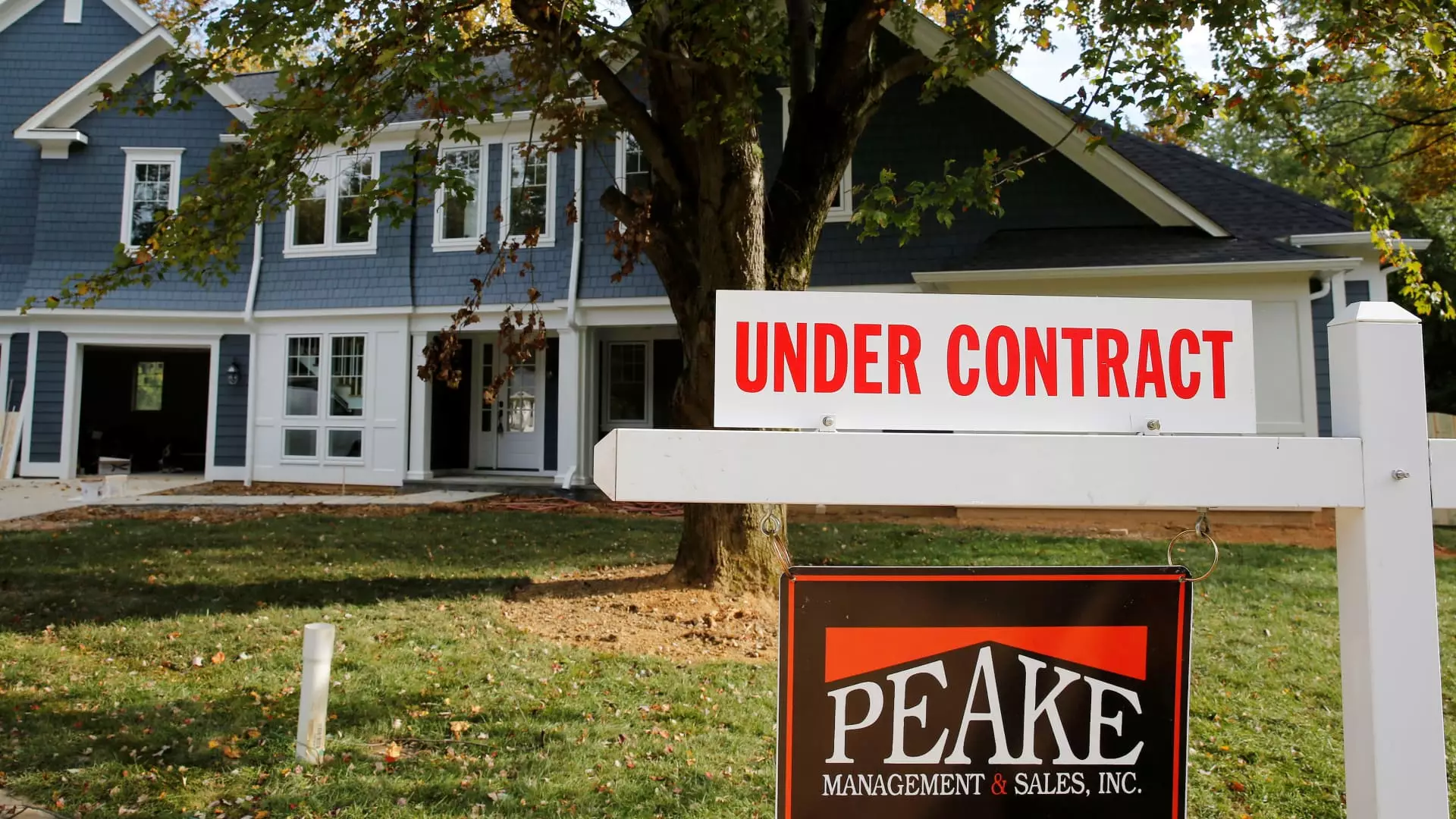In a surprising turn of events, the National Association of Realtors reported that signed contracts for the purchase of existing homes increased by an impressive 7.4% in September compared to August. This figure exceeded analysts’ expectations, who had predicted a modest gain of around 1%. The uptick in pending sales reflects the highest levels since March and indicates a 2.6% increase compared to the same month last year. Pending sales represent the most immediate gauge of buyer demand, providing insights into current market trends and buyer sentiment.
One of the key factors driving this shift in the housing market appears to be the fluctuation in mortgage rates. Throughout August, the average rate for a 30-year fixed mortgage steadily decreased, reaching a low of 6.11% on September 11. This period of lower borrowing costs likely enticed potential buyers, encouraging them to sign contracts. However, the mortgage landscape shifted dramatically in October, with rates now hovering just above 7%. The correlation between mortgage rates and buyer activity illustrates the sensitivity of today’s consumers, signaling that even minor changes in financing costs can significantly impact purchasing decisions.
Regional Variations in Sales Activity
Analyzing the data regionally reveals varying dynamics across the United States. While pending home sales saw an annual increase in the Northeast and West, activity remained flat in the Midwest and South. The most notable gains occurred in the West, where housing prices are notably higher. Here, even slight reductions in mortgage rates could lead to more substantial buyer responses, reinforcing how regional economic conditions affect homebuying trends. However, the question remains of how sustainable this uptick will be, particularly with mortgage rates climbing anew.
Despite the rise in contract signings, the outlook for the housing market remains cautiously optimistic. Selma Hepp, CoreLogic’s chief economist, cautioned that the renewed activity could be short-lived, especially as mortgage rates are trending upwards again. The overall demand for mortgages has shown a notable 10% year-on-year increase, suggesting that buyers are still seeking opportunities, albeit from historically low levels. Affordability challenges reemerge with the uptick in rates, raising concerns about future sales momentum as 2024 approaches.
As the broader economic indicators, including job growth and inventory levels, play a critical role in shaping the housing market, the possibility of further gains cannot be entirely dismissed. Lawrence Yun, the chief economist for the Realtors, implies that sustained job growth and increased inventory could bolster buyer interest. However, with many potential buyers feeling the pinch of higher mortgage rates, the competitive landscape of the housing market is likely to evolve slowly.
While September’s surging pending sales numbers highlight a momentary revival, the interplay of fluctuating mortgage rates, regional disparities, and broader economic conditions casts uncertainty over the long-term outlook for the housing market. Buyers must navigate an increasingly complex real estate landscape, where opportunity and affordability hang delicately in the balance.

